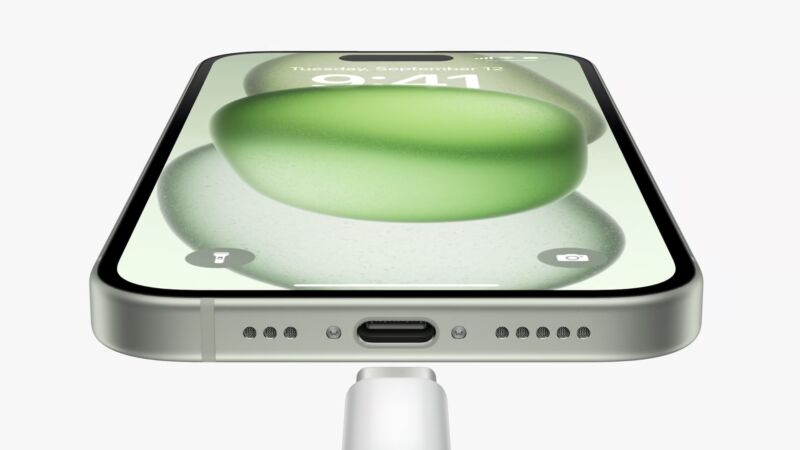
Enlarge / The iPhone 15's USB-C port doesn't require special cables or chargers. (credit: Apple)
The iPhone 15 lineup's transition from Lightning to USB-C this week wasn’t a surprise to anyone who had been paying attention. Apple had been signaling for months that it intended to switch ports, at least in part to conform with new regulations from the EU and elsewhere that required them to do it.
With the USB-C transition essentially taken for granted, the rumor mill focused on Apple’s implementation of USB-C, namely that the company would limit data and charging speeds for any accessories not certified through its Made for iPhone (MFI) program. Without certified cables, the rumors said, other USB-C accessories would be limited to basic functionality, like 480Mbps USB 2.0 transfer speeds and slower charging speeds. (Reporting from MacStories indicates that the new iPhones support 20 W fast charging, though faster speeds may be possible with higher-wattage adapters; the iPhones can also provide up to 4.5 W of power to a connected accessory like the USB-C AirPods case.) Officially licensed Lightning cables use a small controller chip to verify authenticity, and cables without them can generate error messages and refuse to work.
But this USB-C rumor was always difficult to believe, partly because Apple has been shipping fully standards-compliant USB-C ports in its Macs and iPads for years now. If anything, I’ve found Apple’s USB-C ports to be less temperamental than those that come in some PCs—I’ve used HP and Lenovo PCs that either complain about slow charging or reduce performance if you use third-party chargers with them, but my MacBooks have always happily connected to whatever charger I wanted to use them with.
No comments:
Post a Comment